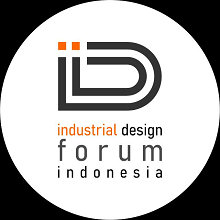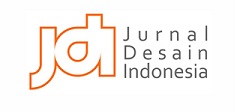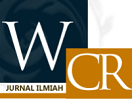TINJAUAN TEKNIK PEWARNAAN ALAMI PADA BATIK BETAWI
Abstract
The increasing public awareness of the dangers posed by the use of synthetic dyes led people to use natural dyes as a solution that are more environmentally friendly. The use of natural dyes in batik is also practiced in Betawi Batik, specifically KBB Setu Babakan in Jagakarsa and Batik Seraci in Bekasi. However, the complicated process, long processing time, and resulting colors that tend to be pale, uneven, and inconsistent pose as a threat to this technique’s sustainability. Based on that premise, research on the development of the potential of natural coloring techniques for batik has become a significant thing. This study aims to record and identify the types of dyes and natural coloring technique in the Betawi Batik’s workshops, in order to examine its strengths, weaknesses, and threats. Thus, a strategy for developing natural dyes can be formulated to support the creation of creative industry products that are more environmentally friendly.
Keywords
Full Text:
PDF (Bahasa Indonesia)References
Anhar, M., Asikin, S., Purwano, B., Machroedin, H. (2013). Warna Alam: Panduan untuk Batik. Jakarta: Keluarga Batik Betawi.
Djufri, R. (1976). Teknologi Pengelantangan, Pencelupan, dan Pencapan. Bandung: Institut Teknologi Tekstil.
Hasanudin. (2001). Batik Pesisiran: Melacak Pengaruh Etos Dagang Santri pada Ragam Hias Batik. Bandung: PT Kiblat Buku Utama.
Jasper, J.E. & Pirngadie, R.M. (1916), Subagiyo, P.Y. & Adiwoso, S. H., (1996, Terj.) Seni Batik. Jakarta: Tim Peneliti Batik Indonesia.
Kant, R. (2012). Textile Dyeing Industry an Environmental Hazard. Open Access Journal Natural Science, 4(1).
Katarina, W., Nurdiani, N., & Mariana, Y. (2014). Tata Ruang Lingkungan Kampung Batik di Jakarta sebagai Kawasan Wisata Industri Rumah Tangga. ComTech: Computer, Mathematics and Engineering Applications, 5(2), 893-904.
Kusumowardhani, P. (2017). Identifikasi Unsur Visual Bentuk Dan Warna Yang Menjadi Ciri Khas Motif Ragam Hias Batik Betawi Tarogong Jakarta. Seminar Nasional Seni dan Desain 2017, 97-105. Surabaya: UNS.
Widjajanti, E., Padmaningrum, R. T., & Utomo, M. P. (2011). Pola Adsorpsi Zeolit Terhadap Pewarna Azo Metil Merah dan Metil Jingga. Prosiding Seminar Nasional Penelitian, Pendidikan dan Penerapan MIPA, K115-K122. Yogyakarta: Fakultas MIPA, Universitas Negeri Yogyakarta.
Yernisa, G. S. I. E. & Syamsu, K. (2013). Aplikasi Pewarna Bubuk Alami dari Ekstrak Biji Pinang (Areca catechu L.) pada Pewarnaan Sabun Transparan. Jurnal Teknologi Industri Pertanian, 23(3), 190-198.
Purnomo, M. A. J. (2004) Zat Pewarna Alam Sebagai Alternatif Zat Warna yang Ramah Lingkungan. Jurnal Ornamen, 2(1), 57-61.
Rizka, A.R. (2017). Peran Warna Khas dalam Kemasan Produk dalam Konteks Brand Identity. Jurnal Narada 4(1), 53-60.
Soedarwanto, H., Muthi’ah, W., & Maftukha, N. (2018). Tinjauan Ekspresi Seni pada Ragam Hias Batik Betawi. Jurnal Narada 5(1), 73-88.
Suprapto, A. (2005). Teknologi Persiapan Penyempurnaan. Bandung: Sekolah Tinggi Teknologi Tekstil.
Sylvia, N. (2017). Identitas Priangan pada Batik Komar. Jurnal Narada 4(1), 43-52.
DOI: http://dx.doi.org/10.22441/narada.2019.v6.i3.003
Refbacks
- There are currently no refbacks.
Fakultas Desain dan Seni Kreatif
Universitas Mercu Buana
Gedung E Lantai 4
Jl. Raya Meruya Selatan no.1, Kembangan, Jakarta 11650
Tlp./Fax: +62215871335
Journal International Standard Serial Number (ISSN) Registration:
The Journal is indexed by:
Tools for Citations & Plagiarism Detection:

Ciptaan disebarluaskan di bawah Lisensi Creative Commons Atribusi-NonKomersial 4.0 Internasional
 NARADA: Jurnal Desain dan Seni
NARADA: Jurnal Desain dan Seni

























